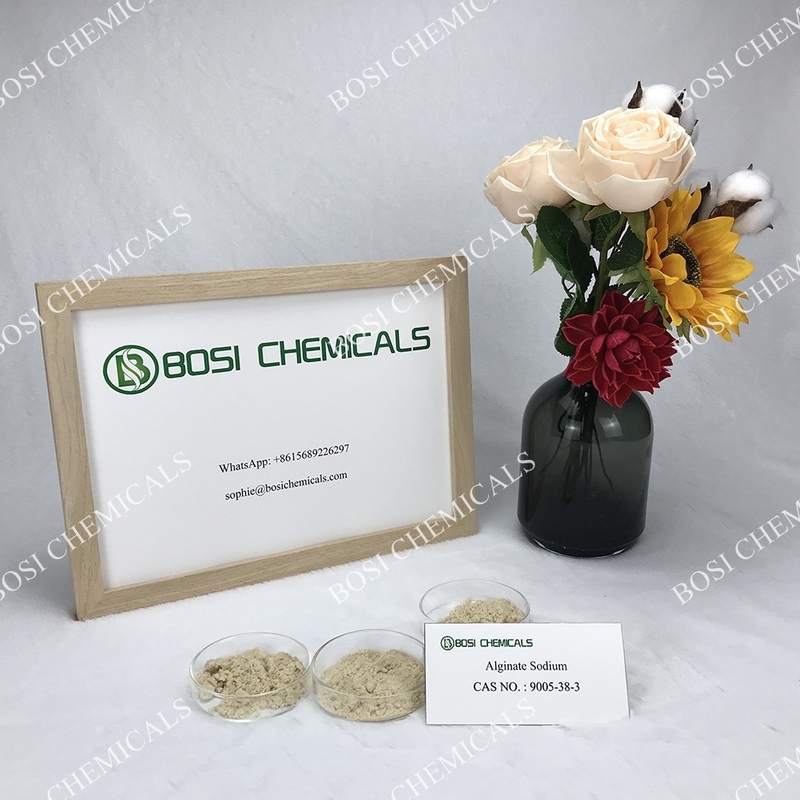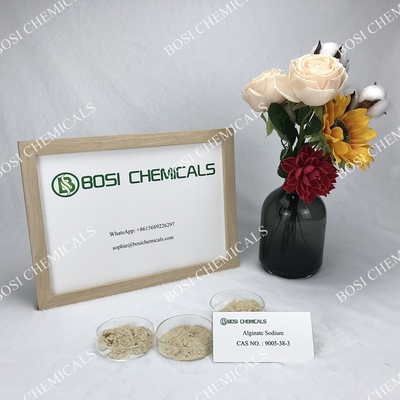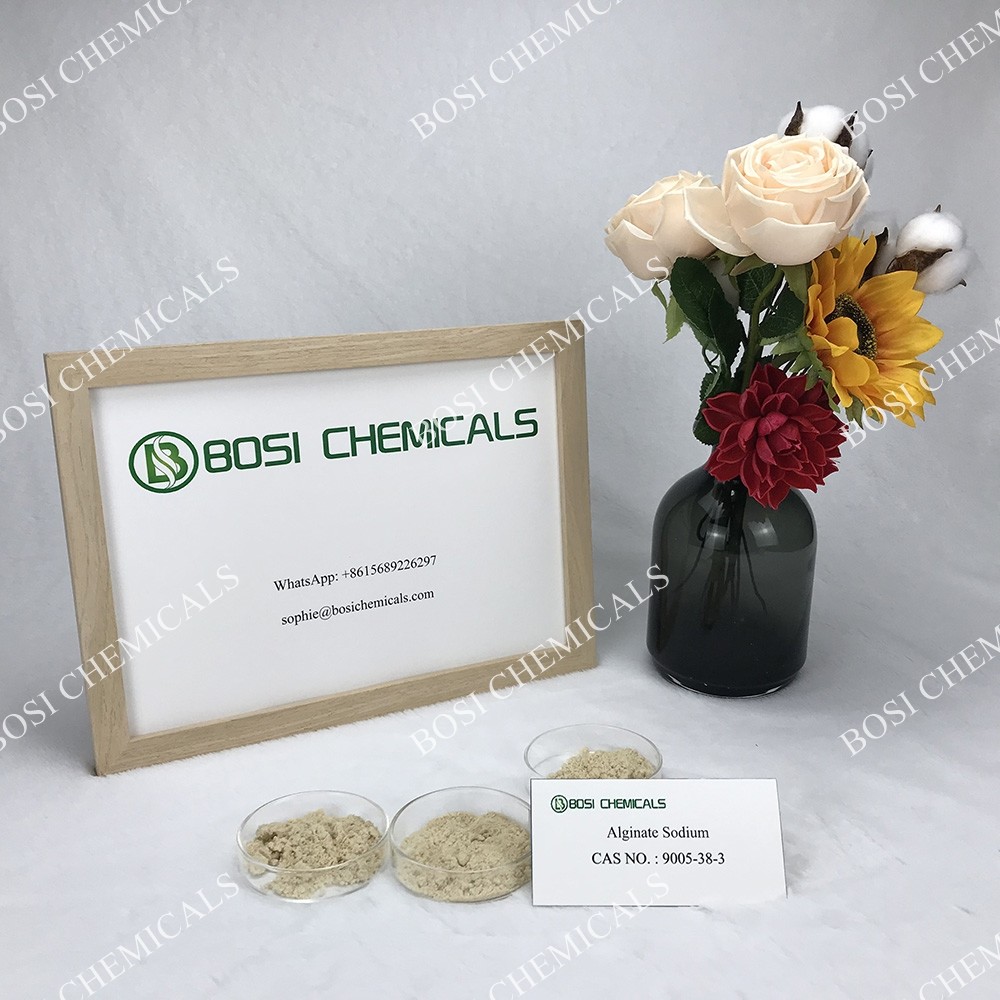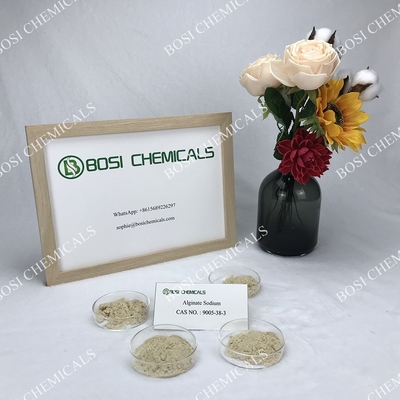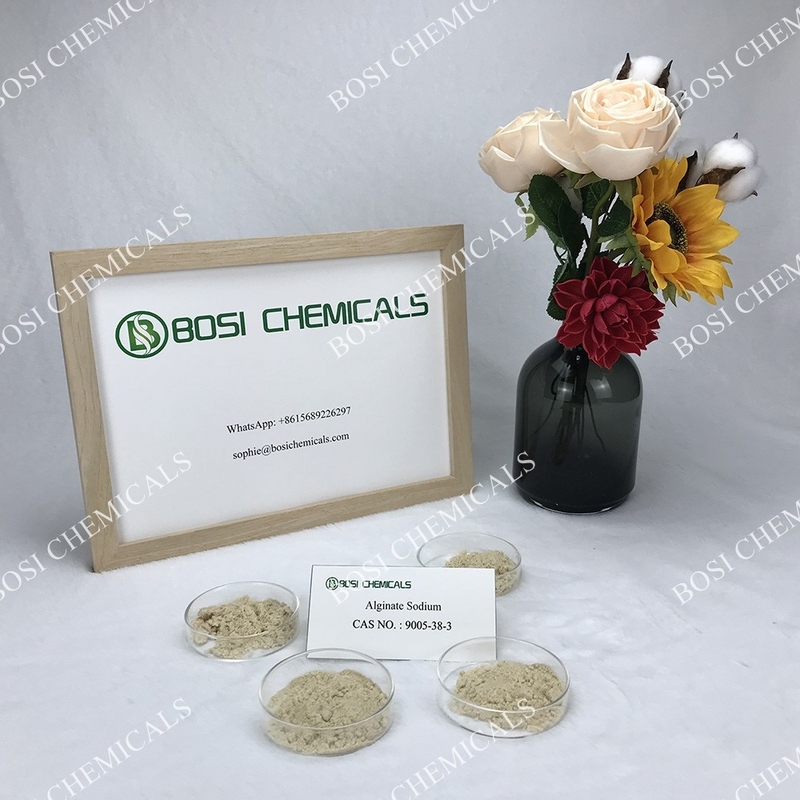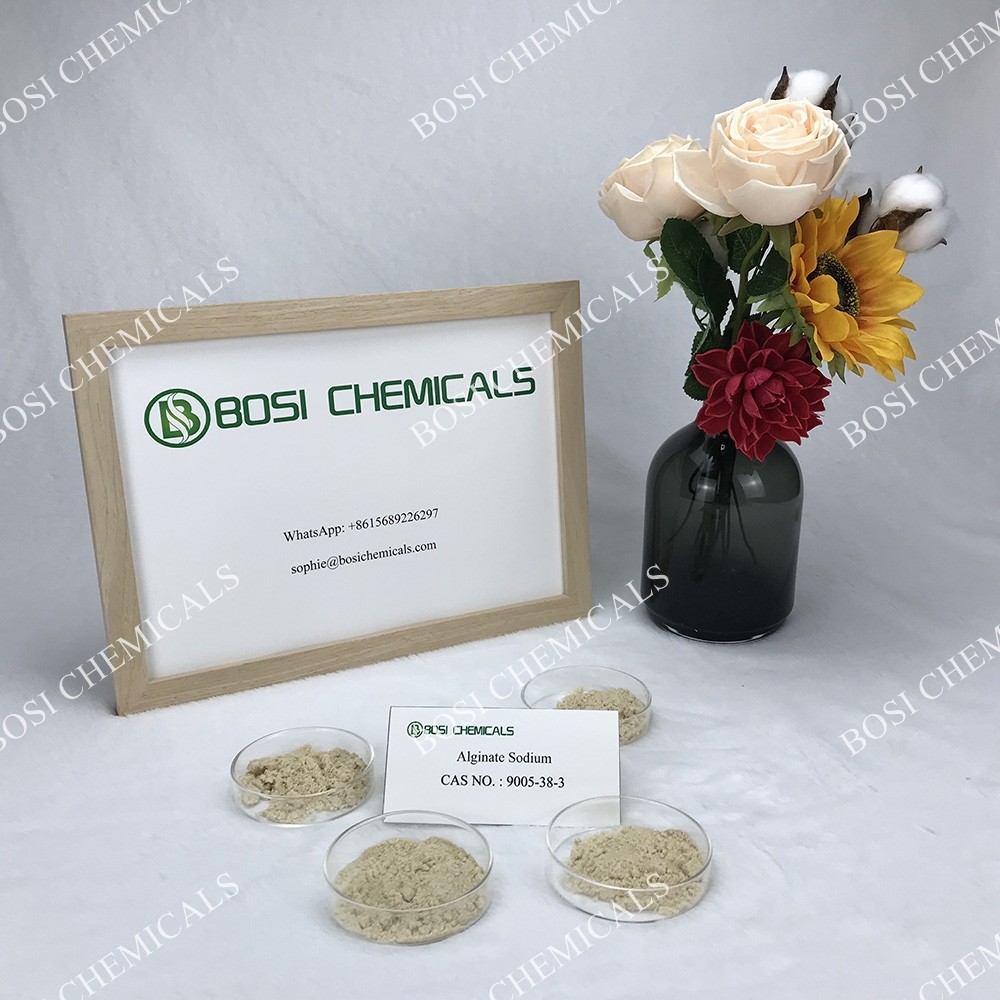Light Brownish Alginate Sodium With Purity 99%Min
Alginic acid, also called Alginate Sodium, is a naturally occurring, edible polysaccharide found in brown algae. It is hydrophilic and forms a viscous gum when hydrated. With metals such as sodium and calcium, its salts are known as alginates. Its colour ranges from white to yellowish-brown. It is sold in filamentous, granular, or powdered forms.
It is a significant component of the biofilms produced by the bacterium Pseudomonas aeruginosa, a major pathogen found in the lungs of some people who have cystic fibrosis. The biofilm and P. aeruginosa have a high resistance to antibiotics, but susceptible to inhibition by macrophages.

| ITEM |
CONTENT |
| Alias |
Sodium alginate |
| MF |
(C6H7NaO6)X |
| CAS No. |
9005-38-3 |
| Yeasts and moulds |
100/g max |
| Ca Content |
Less Than 3% |
| Mesh |
40-200mesh |
| Assay(on dry basis) |
98.0% min |
| Insoluble Matter In Water(%) |
<0.6 |

Alginates are refined from brown seaweeds. Throughout the world, many of the Phaeophyceae class brown seaweeds are harvested to be processed and converted into sodium alginate. Sodium alginate is used in many industries including food, animal food, fertilisers, textile printing, and pharmaceuticals. Dental impression material uses alginate as its means of gelling. Food grade alginate is an approved ingredient in processed and manufactured foods.
Brown seaweeds range in size from the giant kelp Macrocystis pyrifera which can be 20–40 meters long, to thick, leather-like seaweeds from 2–4 m long, to smaller species 30–60 cm long. Most brown seaweed used for alginates are gathered from the wild, with the exception of Laminaria japonica, which is cultivated in China for food and its surplus material is diverted to the alginate industry in China.
Alginates from different species of brown seaweed vary in their chemical structure resulting in different physical properties of alginates. Some species yield an alginate that gives a strong gel, another a weaker gel, some may produce a cream or white alginate, while others are difficult to gel and are best used for technical applications where color does not matter.
Commercial grade alginate are extracted from giant kelp Macrocystis pyrifera, Ascophyllum nodosum, and types of Laminaria. Alginates are also produced by two bacterial genera Pseudomonas and Azotobacter, which played a major role in the unravelling of its biosynthesis pathway. Bacterial alginates are useful for the production of micro- or nanostructures suitable for medical applications.
Sodium alginate (NaC6H7O6) is the sodium salt of alginic acid. Sodium alginate is a gum.
Potassium alginate (KC6H7O6) is the potassium salt of alginic acid.
Calcium alginate (CaC12H14O12), is made from sodium alginate from which the sodium ion has been removed and replaced with calcium (ion exchange).

 Your message must be between 20-3,000 characters!
Your message must be between 20-3,000 characters! Please check your E-mail!
Please check your E-mail!  Your message must be between 20-3,000 characters!
Your message must be between 20-3,000 characters! Please check your E-mail!
Please check your E-mail! 

